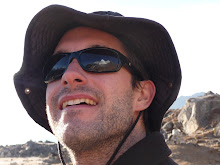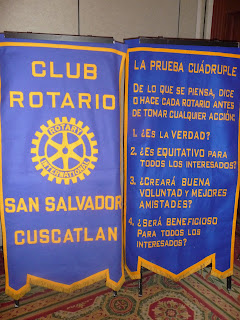One of the reasons VisionSpring is able to sell at prices below their competitors is that their ready-made reader glasses are made in China. See the following link to get a description of the factories VisionSpring purchases its glasses from in China: VisionSpring production in China.
However, people with more serious eye conditions often need custom made glasses. With production to delivery times often exceeding two months, it is obviously not feasible to custom make glasses in China. That is why VisionSpring’s partner organization (mostly) custom makes its glasses in San Salvador. I say mostly because I learned that most of the companies that make glasses in El Salvador still purchase their frames in China (or sometimes Italy, of all places).
To get a better idea of the production and distribution of glasses in El Salvador, I visited Oscar in San Salvador, who in addition to being a licensed optometrist who works with VisionSpring on the side also runs a family laboratory making eye glasses. Oscar informed me that no frames have been made in El Salvador since the mid-70s when all production moved to China (and a couple of other countries). In fact, Oscar lost his job making frames in El Salvadora in 1973 when his factory moved to China. With some assistance, he went back to school to become an optometrist, studying in Guatemala (there was no technical licensing program in optometry in El Salvador until this year).
Don Oscar in his lab working on a pair of glasses
Oscar works intently, trying not to be distracted by my presence
Oscar's son Paulito poses with some machinery
Years later, in the early 90s, Oscar had a friend who made glasses who was unhappy with his supplier in San Salvador. Oscar told him: “give me six months and I will meet all of your orders going forward.” He invested in the necessary equipment and has run his business ever since, assisted by his wife, son, daughter, and other family members. Today he sells glasses to the non-profit partner of VisionSpring for just above cost – cheaper than he sells to other clients – because he knows how much good VisionSpring is doing for people in his country.
So how is VisionSpring able to sell at a price so much lower than many of its competitors? It’s in part because they make their ready-readers entirely in China and ship them over in bulk. Due to standardization and bulk buying, VisionSpring is able to keep its costs down. Moreover, as a non-profit I assume VisionSpring’s overhead costs are lower than some competitors, not to mention the fact that VisionSpring, while it aims to be self-sufficient, is not pressured to maximize profits through its sales. (As a double-bottom line business VisionSpring does a balancing act between making an impact and trying to bring in revenue, but priority is placed squarely and firmly on making a difference in the lives of low-income individuals.) Finally, VisionSpring is able to keep its prices low due to the support of charitable contributions.
Finally, what may also account for the price differences is that the market in El Salvador is dominated by an oligopoly which produces the majority of the country's glasses and sells them through their own high-priced outlets. Thus, there is also a potential opportunity for VisionSpring to sell to individuals with higher incomes, thus growing the business and making it possible to serve more low-income people.
In addition to working on a business plan for the optical shop, I am in regular contact with the country director to help analyze other aspects of the business, basically offering general strategy consulting services. I may also help train up some new Vision Entrepreneurs next month.























































